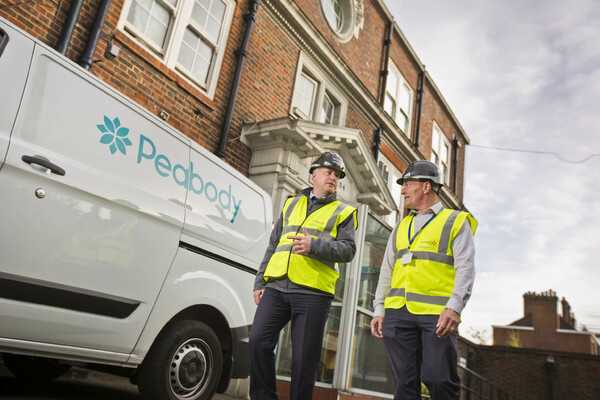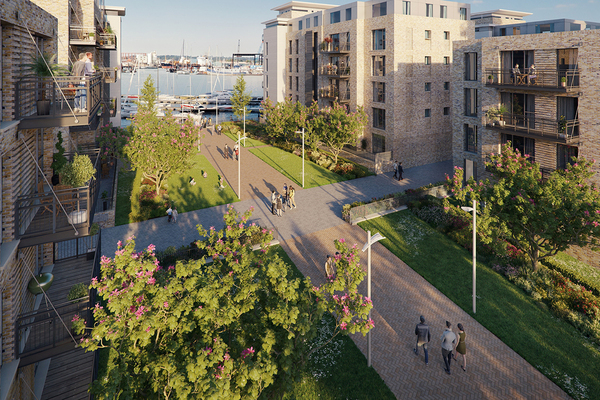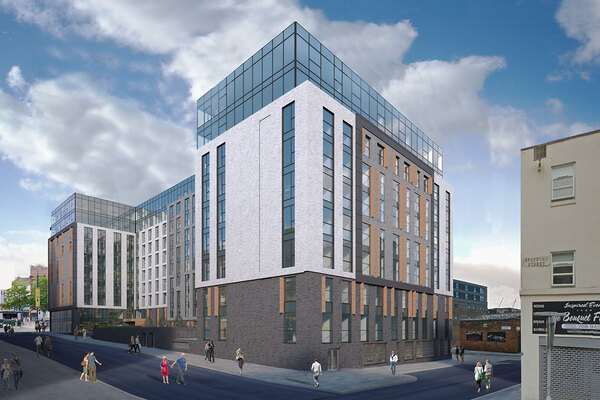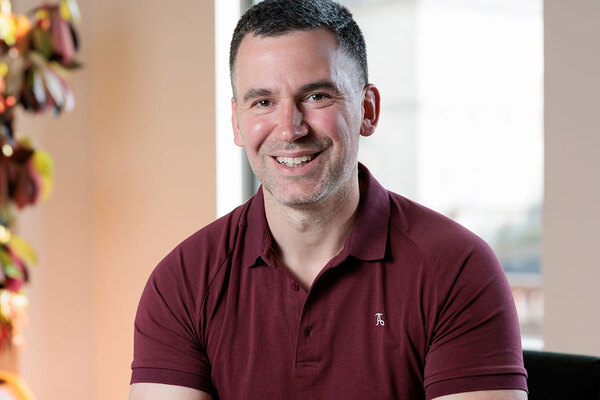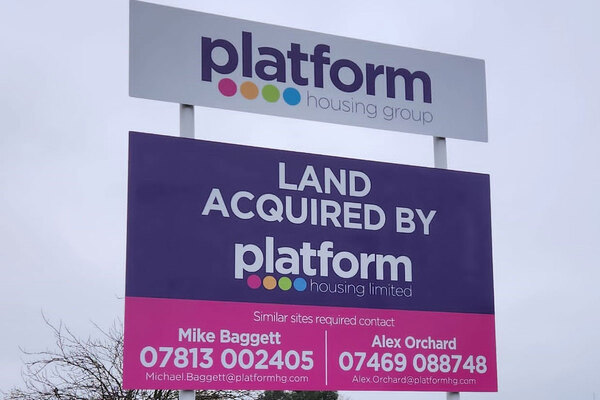You are viewing 1 of your 1 free articles
Peabody and Catalyst merger: how the country’s second-biggest housing association will work
Two of London’s largest landlords have begun discussions about a merger that would make it the UK’s second-biggest landlord. Jack Simpson explores the proposed mega-merger and considers what the new organisation may look like. Illustration by Michelle Thompson
At the end of last month, it was announced that two of London’s biggest housing associations, Catalyst and Peabody, were in talks about a merger.
The partnership, if agreed, would create a 104,000-home landlord, the second-biggest in the country. Inside Housing analyses the mega-merger to see what it might look like and why both boards decided to join forces.
Who are the two associations?
As they are two of London’s biggest associations, the deal would mean the new organisation slots in just behind Clarion as the UK’s second biggest. Peabody is the bigger partner, with 67,000 homes, while Catalyst owns 37,000.
Peabody approached Catalyst, and it will be Catalyst that joins it as a subsidiary if the deal goes ahead next April, before being fully integrated afterwards. According to the landlord, it was driven largely by shared “strategic priorities” and the geographical fit between the organisations.
Catalyst is split into two divisions: Catalyst London and Catalyst Counties. The Counties business is based across the South East of England, including Buckinghamshire, Oxfordshire, Berkshire, Bedfordshire, Cambridgeshire and Northamptonshire.
Peabody holds most of its homes in London, with a particularly high number in the inner boroughs of Hackney, Islington and Greenwich. It has less coverage in the west of London, in boroughs such as Ealing, where Catalyst has a stronghold and is headquartered.
Outside London, Peabody has more than 500 homes in Surrey and Sussex, 2,000 in Essex and nearly 9,000 in Kent. The merger would mean the new larger group has full coverage around London and the majority of the surrounding counties.
Both are familiar with mergers, aren’t they?
Yes, this would be one of several mergers the two associations have been through recently. In 2018, Peabody completed a merger with Family Mosaic to become what was then a 55,000-home landlord. Within months of this, Peabody was on to its next partnership, with 9,500-home Town & Country Housing Group joining its ranks and increasing its coverage in Kent and Sussex.
In May 2019, Catalyst completed its merger with 11,000-home landlord Aldwyck. In the months before talks began, Ian McDermott had been named as the new head of Catalyst but had yet to join officially.
What happens now?
Over the next six weeks both organisations will carry out a consultation with residents to get their views on the potential merger. The results from this will then be put into a full report for board members to assess and decide on whether to proceed.
If agreed, the landlords have said they will work with their residents to co-design the new enlarged group’s local offer and services. The merger will officially happen on 1 April, with Catalyst initially joining as a subsidiary.
The two associations have hinted that the new, large organisation will be divided up into a local delivery structure, with local teams providing services.
Once that has happened, different members of Catalyst and Peabody staff will take up their roles in the executive team. Many of these have already been decided.
Mr McDermott will be at the head of the organisation. The top jobs will be split across the executive team, with five going to current Catalyst directors and five to Peabody directors. Peabody chair Lord Bob Kerslake will be chair, and Catalyst’s chair will take on the role of vice-chair.
Peabody’s current chief executive Brendan Sarsfield will officially step down at the end of September. Ian McDermott will take over as interim chief executive of Peabody, and Catalyst’s current chief operating officer Sarah Thomas will take over as its boss.
Peabody has said that if the merger does not go ahead, it will be up to Mr McDermott whether he joins permanently. If he does not, the landlord will begin its search for a new boss.
The post-merger executive team
- Chair: Lord Bob Kerslake (chair, Peabody)
- Vice-chair: Ravi Rajagopal (chair, Catalyst)
- Chief executive: Ian McDermott (CEO, Catalyst)
- Deputy chief executive: Ash Fox (COO, Peabody)
- COO: Sarah Thomas (COO, Catalyst)
- CFO: Eamonn Hughes (CFO, Peabody)
- Director of care, supported housing and inclusion: Stephen Burns (director of care and communities, Peabody)
- Director of property services and assets: Peter Evans (director of property services, Catalyst)
- Director of corporate services David Lavarack (director of corporate services, Peabody)
- Director of development: Philip Jenkins (development director, Catalyst)
- Director of Thamesmead: John Lewis (director of Thamesmead, Peabody)
- Director of Town & Country Housing: Bob Heapy (CEO of Town & Country, Peabody)
- Director of integration: Tim Jennings (executive director of finance, Catalyst)
What do the organisations think the benefits of the merger will be?
The organisations say a number of benefits come with increasing in size. At the starting point, both have a pipeline of nearly 19,000 homes that can be delivered on day one. With added capacity, they will be looking to expand development programmes, particularly for social rent.
They also believe that growing the group will allow them to better tackle both the building safety and climate crises. On the environment, they have said they can go “further and quicker” by sharing resources and establishing procurement partnerships. On fire safety, they have said that being bigger will give them more influence, so they can play a leading role in culture change as the new building safety regulatory regime is implemented.
But the biggest thing they feel they can improve through the expanded organisation is the service delivered to residents, with this being a key theme throughout their communication on the proposed merger.
Won’t becoming a 104,000-home association move them further away from residents?
They say no, and instead believe that their local delivery structure, which will have authoritative local leaders in charge, will avoid this.
And it appears that both organisations will be bringing something to the party: Peabody is more advanced on the digital offer and data-driven insight, and Catalyst is further advanced on the local delivery model and engagement.
There is also clearly going to be a drive towards digital and data-driven services, with both organisations saying that they will use data to inform many of their decisions at local level. Their aim is to design and implement what they call a “modern service delivery” model that combines the benefits of a small, local organisation and a large, influential and resilient organisation able to invest in innovation, technology and services.
Business Leaders Summit
Brought to you by Inside Housing and Social Housing, the Business Leaders Summit (5 October 2021, London) connects chief executives, board members and senior teams from across the sector to share learnings, case studies and best practice for driving positive change.
Gain insights from both sector and out-of-sector leaders and discuss the role of the housing sector in driving economic recovery in a post-pandemic world.
Hear how peers have overcome practical challenges within their organisations, such as working towards net zero targets, digitalisation and tackling difficult conversations head-on.
Digital Futures Summit
The Social Housing and Inside Housing Digital Futures Summit (1-2 November 2021, Manchester) will bring together digital and technology experts from the social housing ecosystem to not only celebrate the pioneering digital achievements that are leading the sector towards a digitally enabled future, but also to recognise, understand and learn from stories that did not go quite to plan.
Only by sharing and embracing ‘failure’ can the sector learn and develop, which will enable local authorities and housing associations to take back control of their services and walk away from the conference with tangible solutions to implement lasting positive change.
This is a ground-breaking conference which focuses on collaboration across the housing sector, rather than competing against one another.

